

James Wong
Honda Australia: CR-V should be number one in segment, Japan previews incoming updates
2 Days Ago
The Porsche Macan is going electric. It costs more, but offers more performance – has the switch from combustion power been worth it?
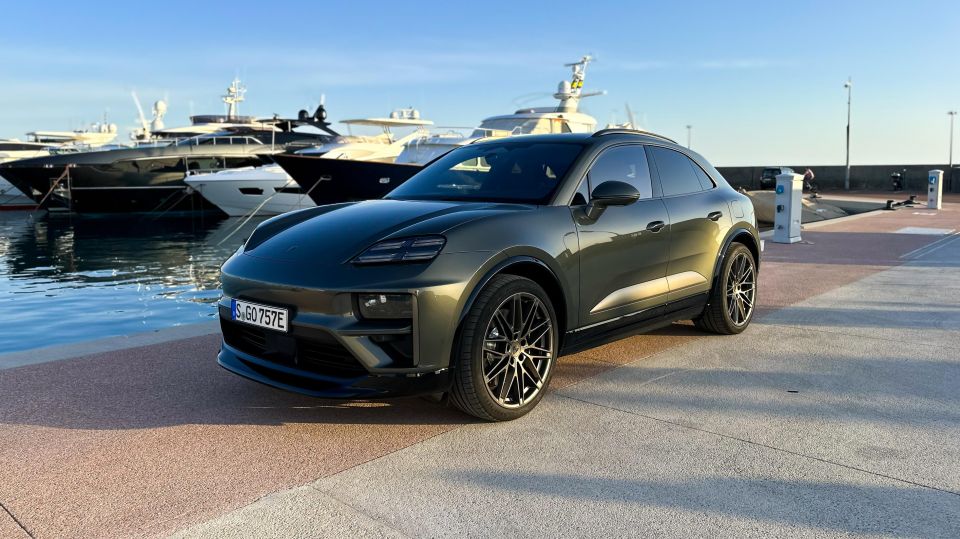
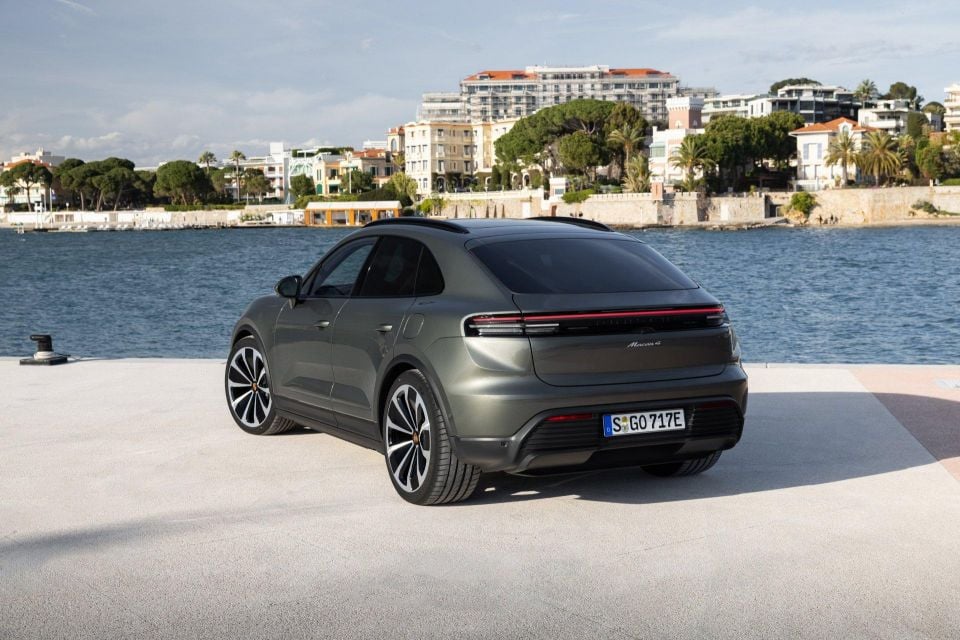

Quickly see how this car stacks up against its competition. Select any benchmark to see more details.
Where expert car reviews meet expert car buying – CarExpert gives you trusted advice, personalised service and real savings on your next new car.
Representing around 50 per cent of Porsche sales in Australia, it’s not hard to see why fundamentally changing your best seller from internal combustion to all-electric could be one of the riskiest moves in the carmaker’s history.
With electric vehicle adoption in Australia increasing year-on-year, Porsche is hoping its customers will be ready to make the shift with the all-new 2025 Porsche Macan.
It sits on a brand-new electric platform shared with Audi, and is Porsche’s second electric vehicle after the Taycan (and soon to be followed by the 718 range).
We had the chance to drive both the Macan 4 and Macan Turbo. While these are the only two models being launched at the moment, Porsche is expected to announce a new entry-level variant and potentially a GTS variant in the coming months.
The dual-motor all-wheel drive Macan 4 is priced at $133,700 before on-road costs, with the Macan Turbo ringing in from $180,100 before on-roads.

As with all Porsche products, there’s an extensive list of options available – things like optional colours (13 standard and 59 individual options), eight wheel designs, eight interior trims colours, and further style customisations.
Porsche Macan Electric pricing:
Prices exclude on-road costs
To see how the Macan Electric lines up against the competition, check out our comparison tool.
Buy your new car without the stress. It's fast, simple and completely free.

Great service from Travis and team, second time I have used this business would not hesitate to recommend them to anyone
Craig C.
Purchased a Ford Ranger in Sunshine Coast, QLD
CarExpert helped Craig save thousands on his Ford Ranger, now let us save you on your next new car.
Find a dealSuch a big leap in pricing, you’d hope, would come with an increase in quality and customisability – and that’s what Porsche has done with the Macan.
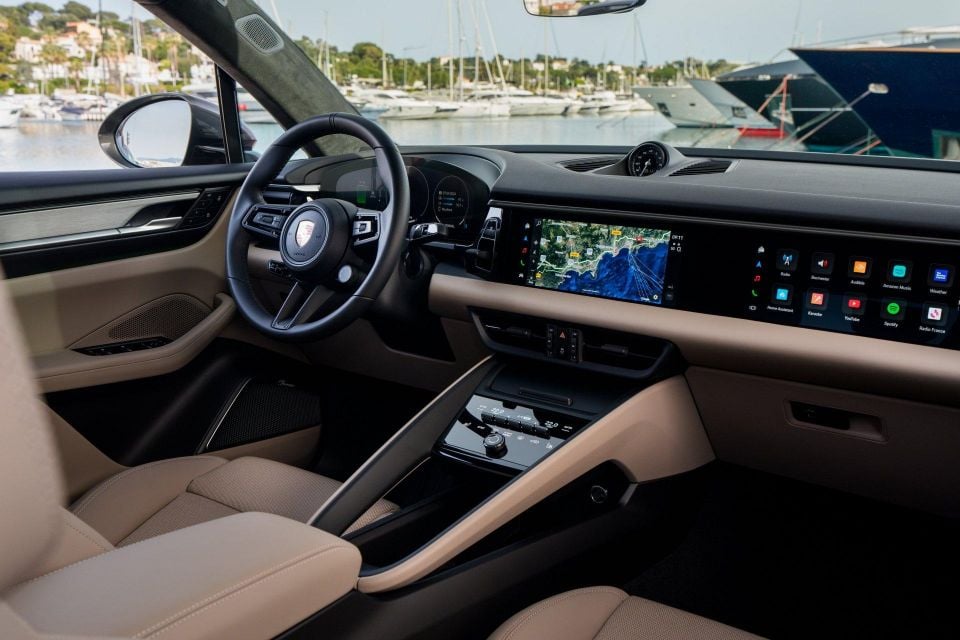
In addition to a litany of external colours (13 standard colours and almost 60 individual colours to pick from), the interior can be totally customised to the buyer’s tastes.
There are eight interior colours to choose from, with a wide variety of combinations and materials to also pick from. Even the key, which has received a redesign, can be customised.
Build quality feels like a big step up from the previous generation. It feels better built than the Cayenne too, which is built in Slovenia as opposed to Germany for the Macan.
The new Macan Electric sits on a longer wheelbase, which means leg- and knee room are improved in the second row. The previous Macan was a little compromised for space in the second row, but now you can easily fit a 185cm tall adult in the second row with an equally sized adult in the first row.
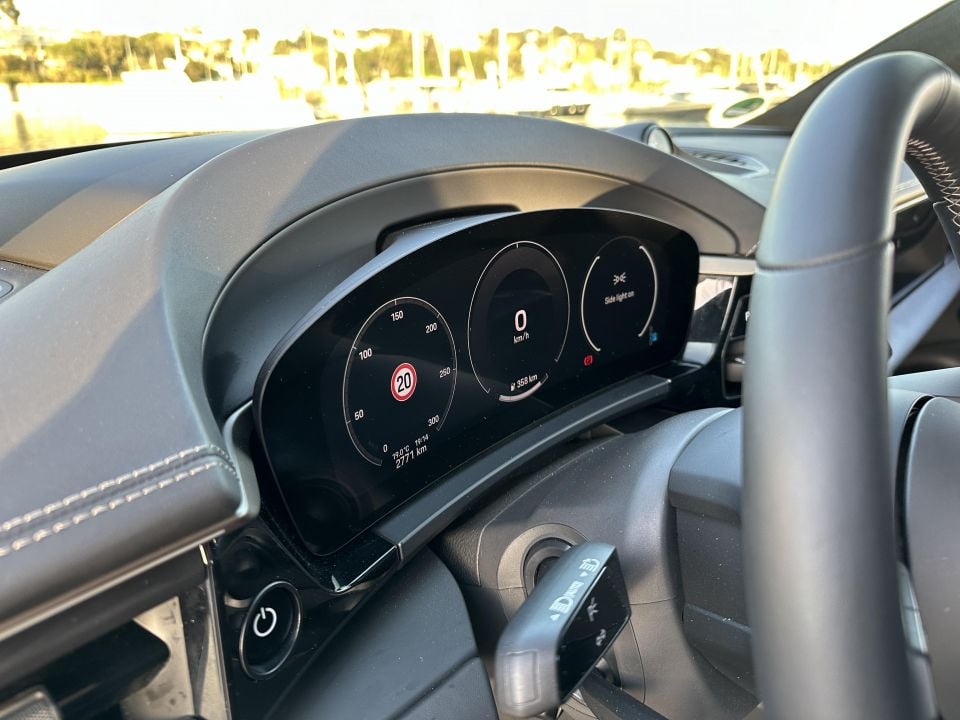
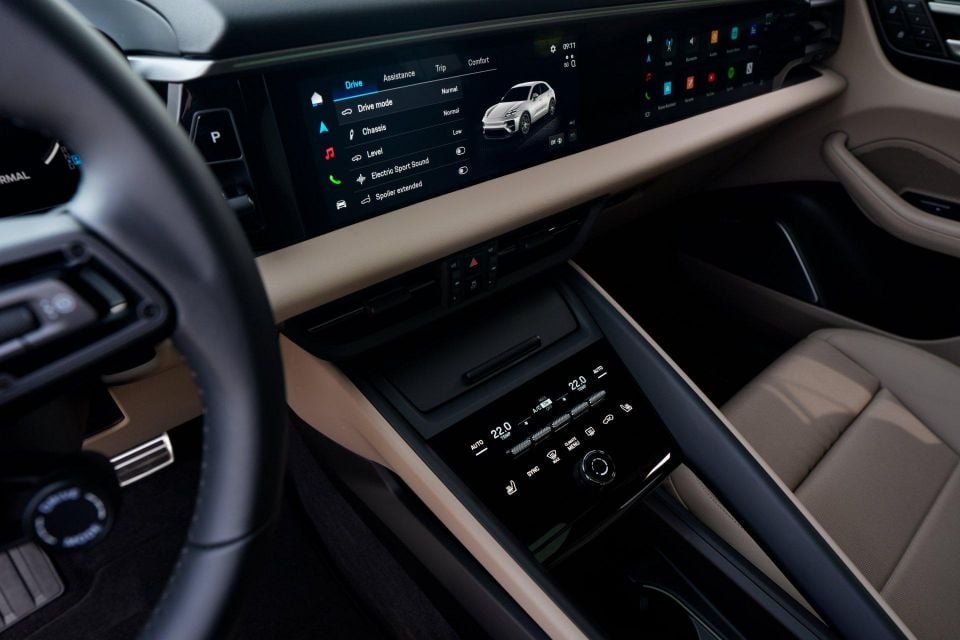
Depending on the spec, you also get quad-zone climate control with controls on a screen located at the back of the centre console.
Infotainment has seen a huge step forward in terms of usability and computation. The screen ahead of the driver is a 12.6-inch curved display – like the one seen in Taycan and Cayenne.
The infotainment screen is a smaller 10.9-inch display with an optionalal passenger 10.9-inch display also available on the Macan 4 and Turbo.
Coding now comes in the form of Android Automotive OS, which is a totally different base to the last Macan. It’s a much smarter way to run a vehicle’s operating system as the base system is managed and maintained by Google, while the top layer (the part seen by the customer) is controlled and designed by Porsche.
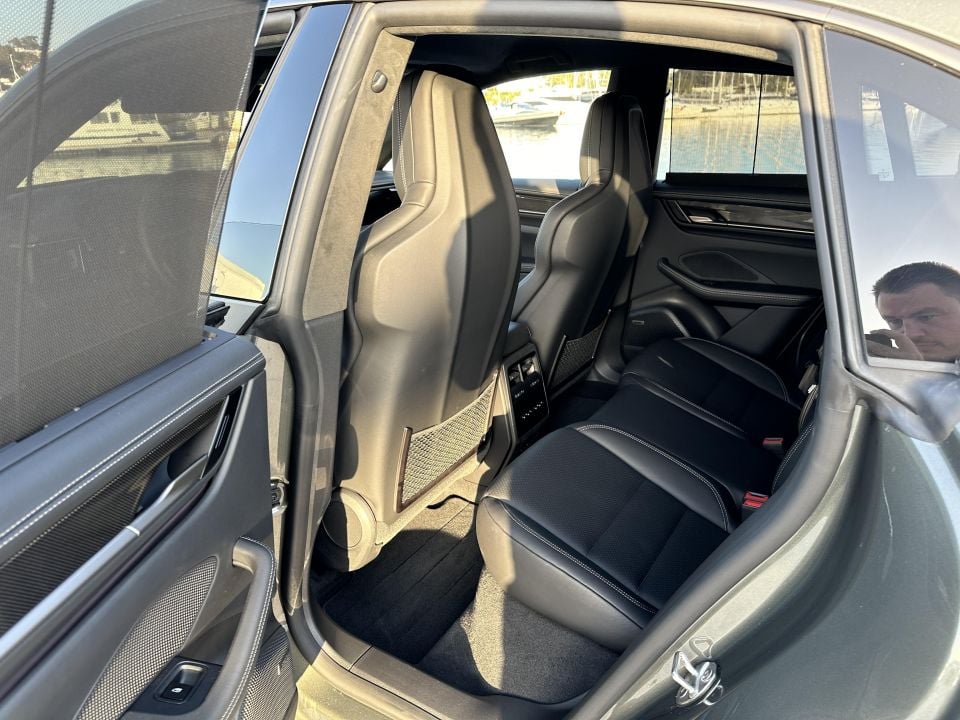
Big advantages include wired and wireless smartphone mirroring (Apple CarPlay and Android Auto), as well as the ability to run Android applications that are compatible with Android Automotive OS.
This includes things like Spotify, Tidal, and even games. Any application you install on the system simply projects on to the screen and has the same functionality as your phone – except it’s now shown on the infotainment display.
It feels snappy and fast to use, with the ability to also use voice controls so you don’t need to take your eyes off the road to operate the system.
Arguably the biggest tech step forward is the head-up display. It features augmented reality and can project road curvature, navigation, and warnings on the road ahead of the driver.
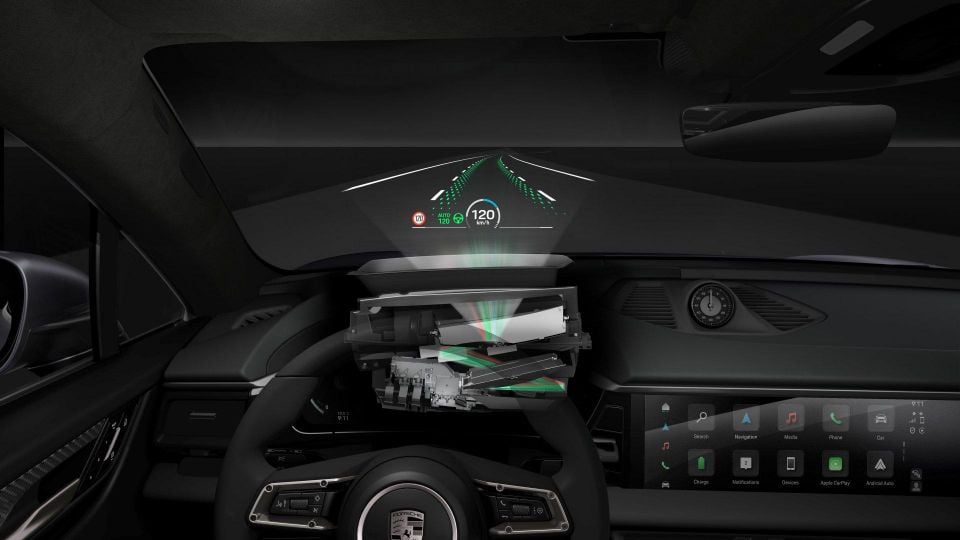
While the screen itself is integrated into the dashboard and is smaller in size, it projects ahead of the driver in the equivalent of an 87-inch display. It’s quite impressive.
In terms of cargo capacity, the figures come in at 540 litres for the Macan 4 and 480 litres for the Macan Turbo. They’re disappointing figures and despite this being a brand new, bespoke electric vehicle platform, Porsche didn’t maximise storage opportunities around the rear or front motors.
Fitting the Macan with a 100kWh battery pack has meant space compromise beneath the skin.
Its larger mass due to the battery also meant needing to fit a larger electric motor at the rear to achieve Tesla Model Y-matching acceleration figures, which has robbed the brand of storage space surrounding the motor.
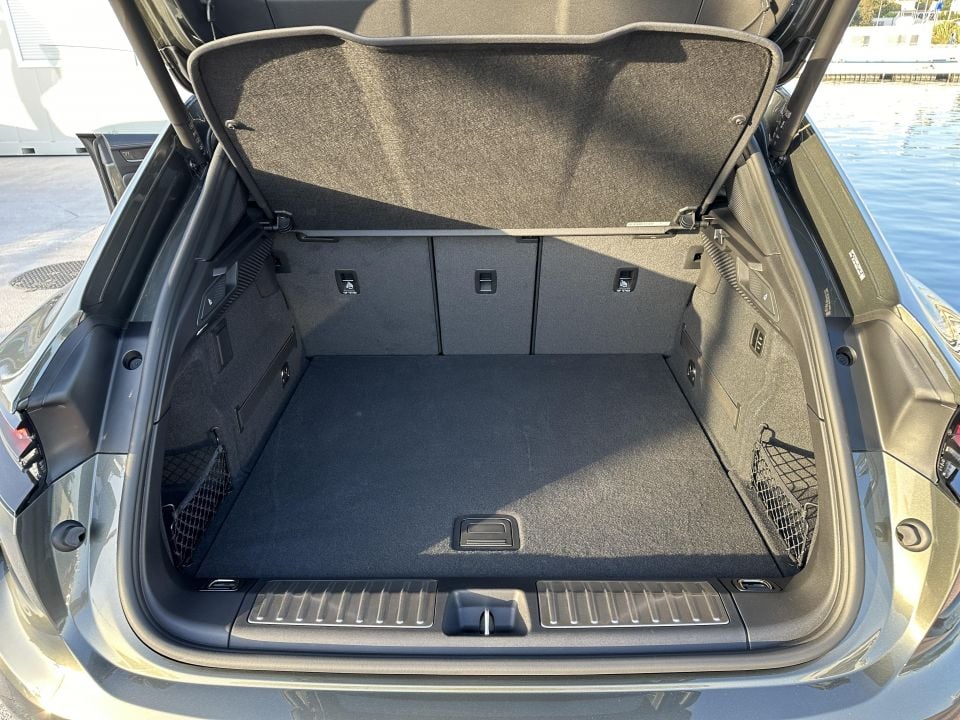
Then there’s the subwoofer for the higher-end sound system in the Turbo, the tank and all the peripherals for the air suspension and anti-roll system. It all results in less-than-ideal amounts of storage, and there’s no space for a spare wheel.
It’s not the end of the world, but it is something worth considering if storage space is a must for you. There’s more storage than the previous-generation Macan, but it’s a long way from some of the roomier electric SUVs.
Premium Platform Electric (PPE) is the name of the platform Porsche co-developed with Audi as the bones for the new Macan.
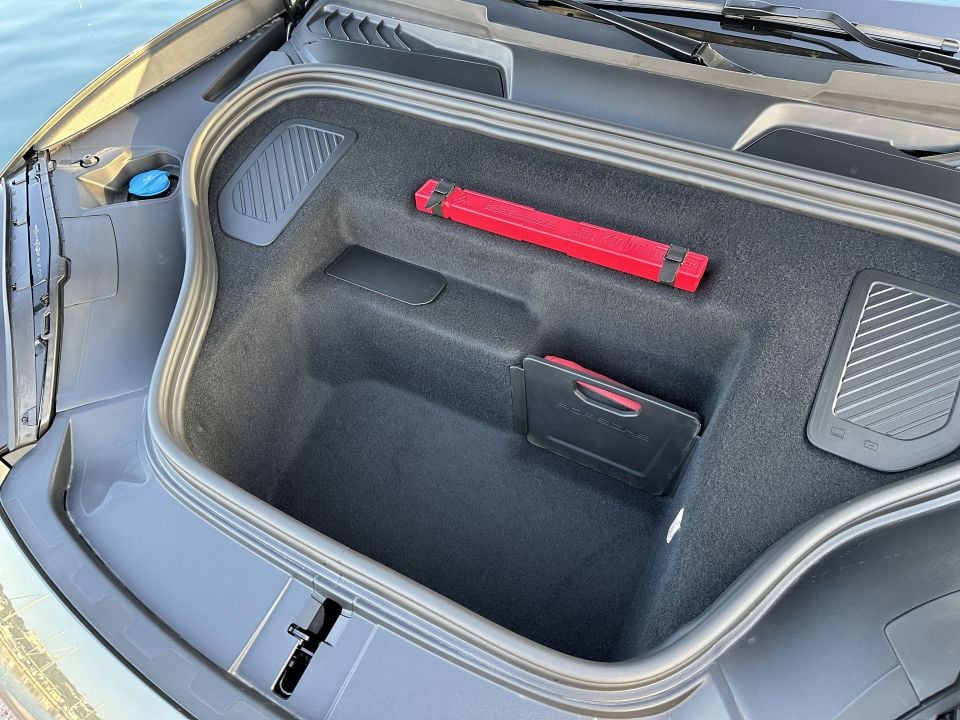
The entire Macan range features a 100kWh NMC lithium-ion battery (95kWh usable) that consists of 12 modules situated within the battery chamber.
These 12 modules can each be replaced – the battery pack can effectively be ejected from the car and the top cover opened to access the modules to enable replacement.
It’s an 800V platform, which means the availability of 270kW peak DC charging while using a 350kW 800V charger. If an 800V charger isn’t available, the system is able to switch from being 12 battery modules in series to being 12 battery modules in parallel. This then allows a peak charging speed of 135kW.
AC charging is offered at up to 11kW using a three-phase charger. Interestingly (and for the better), Porsche has moved the charging port from the front of the vehicle to the rear.
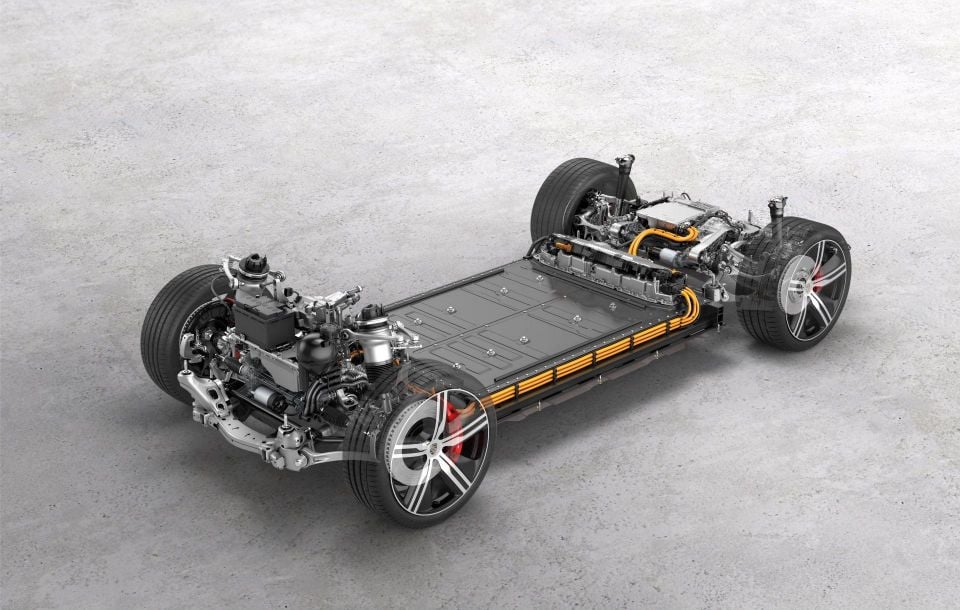
Porsche retains two charge ports – one exclusively for AC charging, the other capable of charging both AC and DC. It makes accessing fast chargers with shorter cables much easier.
The entry-level Macan 4 uses a dual-motor setup and produces 285kW of power and 650Nm of torque. That output is boosted when using launch control, offering a peak 300kW of power and 650Nm of torque. It’s capable of driving 613km on the WLTP cycle and accelerates from 0-100km/h in 5.2 seconds.
Moving up to the Macan Turbo changes the rear motor to a more powerful unit (it’s shared with the Taycan Turbo GT) and it offers up to 430kW of power and a mammoth 1130Nm of torque. With launch control enabled that figure increases to 470kW of power and the same 1130Nm of torque.
It’ll travel 591km on the WLTP cycle and does 0-100km/h in 3.3 seconds.
The Macan has grown in terms of its physical size, but where it has really grown is in terms of its mass.
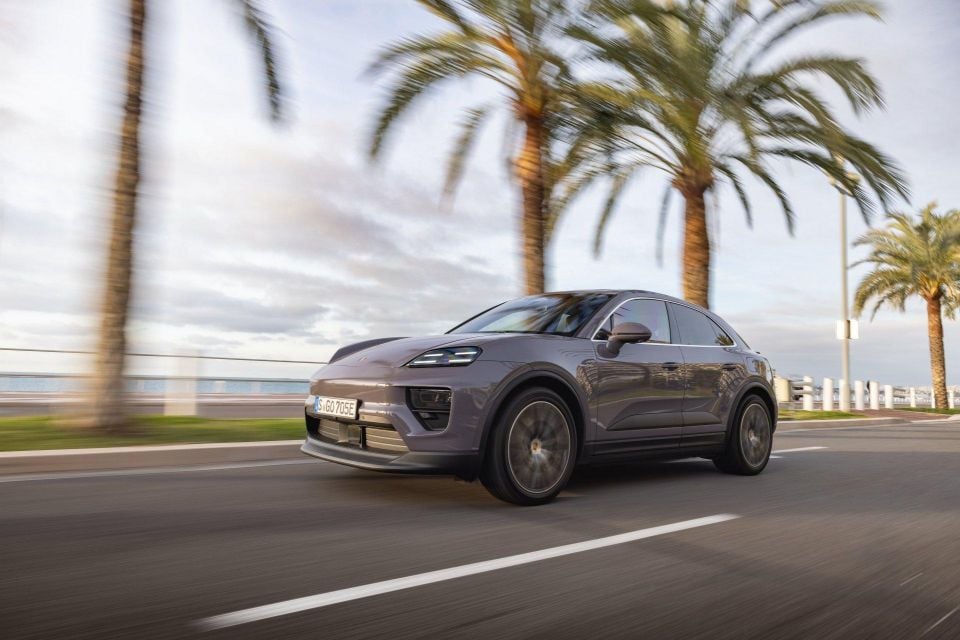
Peak mass comes in at 2405kg for the Macan Turbo and 2334kg for the Macan 4. To put that into context, a Cayenne with a turbocharged V8 engine weighs around 200kg less than the Macan Turbo.
So, it’s probably easy to see why I was so sceptical of this car before I drove it. That’s a huge amount of heft to be hauling about in any sort of sporty fashion.
Firstly, the ride – even when paired with large alloy wheels up to 22-inches – in and around town is excellent.
We only had the opportunity to test vehicles with air suspension (coil springs will be standard on the Macan 4 in Australia) so I suspect the ride wouldn’t be anywhere near as polished without air suspension; but it’s certainly a good sign for some of the terrible roads we have in Australia.
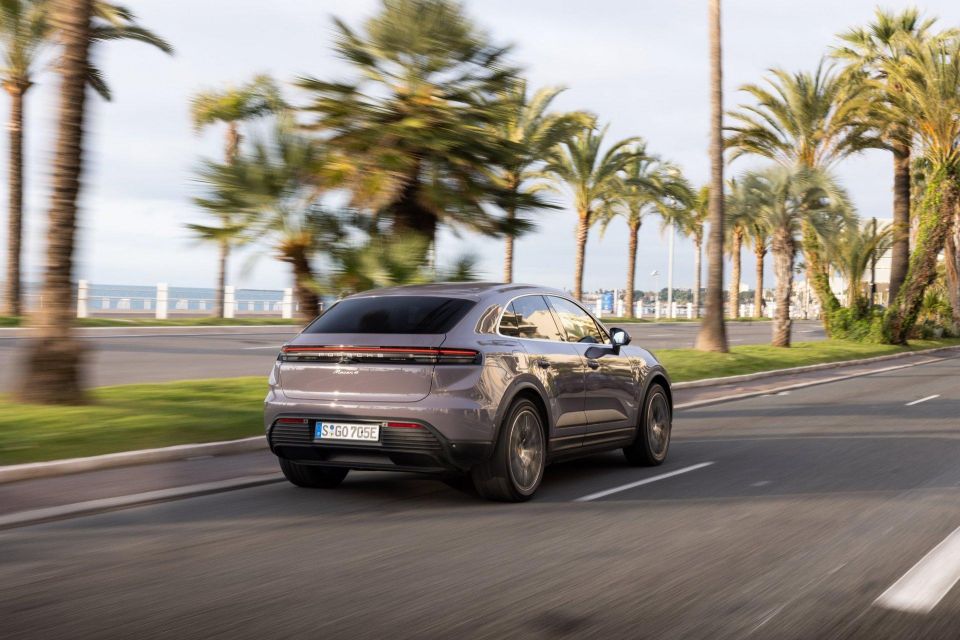
Importantly as well, the Macan doesn’t feel its mass when driven in town. The steering has the ‘Porsche feel’ to it, but it’s not a lumbering vehicle you feel every gram of when driving around town. Porsche has also fitted rear wheel steering, which helps reduce the turning radius during U-turns.
As you head out of the city you’ll notice it’s incredibly quiet. Yes, all electric cars are quiet, but it appears Porsche has gone to a significant amount of effort to ensure very little road noise enters the cabin. Even with the sporty tyres on the Turbo there isn’t a great deal of tyre or road noise that enters the cabin.
Both the Macan 4 and Turbo have explosive acceleration. Give the throttle a stab in either vehicle and they pin you back in the seat – more so in the Turbo. It’s on another level when it comes to acceleration. It’s relentless and quite satisfying.
One thing I didn’t love was the lack of single-pedal driving. I’m probably a bit spoilt having a great system in our Tesla, but most brands these days offer a single pedal driving mode – Hyundai and Kia even offer something like five different regen modes to pick from.
Porsche relies on the brake pedal to do all the work. So, while there are still friction brakes (and they’re big 400mm rotors on the Turbo), it’s always using regen when the brake pedal is used. The only time it doesn’t is when you exceed the limits of regen and the friction brakes are required.
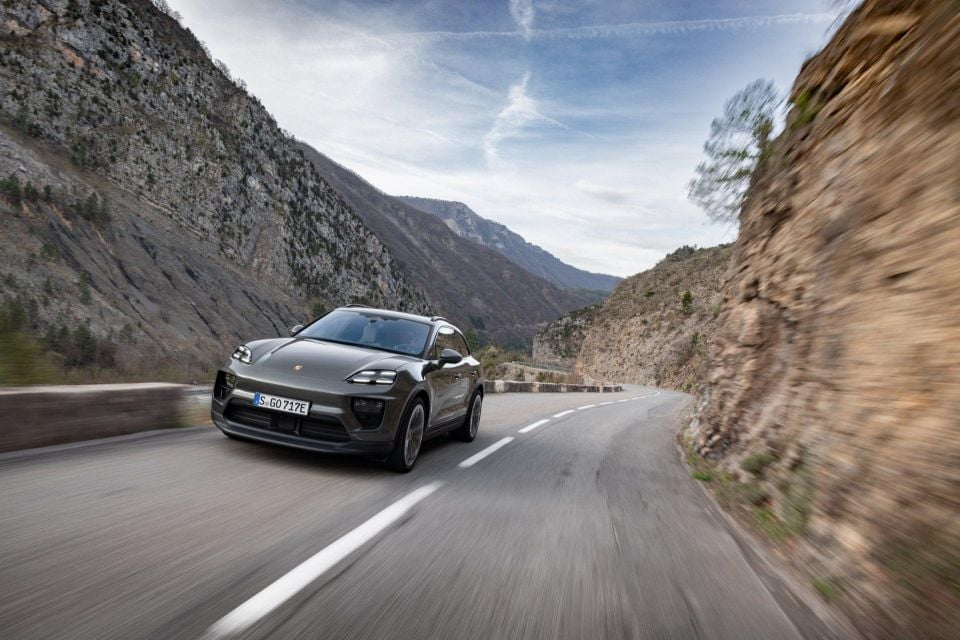
In a way it’s a more seamless system – it feels just like an internal combustion car in terms of pushing a brake pedal and the vehicle slowing down. So if that’s what you’re used to, it’ll work exactly as intended.
A lot of work has gone into the vehicle’s safety systems. Traffic sign recognition, along with lane centring and radar cruise control systems will come standard on Macan 4 and Turbo in Australia. We didn’t spend a great deal of time on the freeway to test the lane support systems, but we found a low intrusion level with the systems in general, which was positive.
What happens when you start getting stuck into it? I was in the Turbo for our video review and flicked it over to Sport+, which lowered the suspension slightly and offered up tighter steering and sharper throttle response.
Unlike the Taycan, which uses a two-speed gearbox, the Macan uses a single gear with torque always available.
While the Macan 4 will do a maximum speed of 220km/h, the Turbo pushes it out to 260km/h, which is a tricky thing to achieve with a single-speed because to offer big torque low in the rpm band and high in the rpm band you need a motor that will spin at a high rpm.
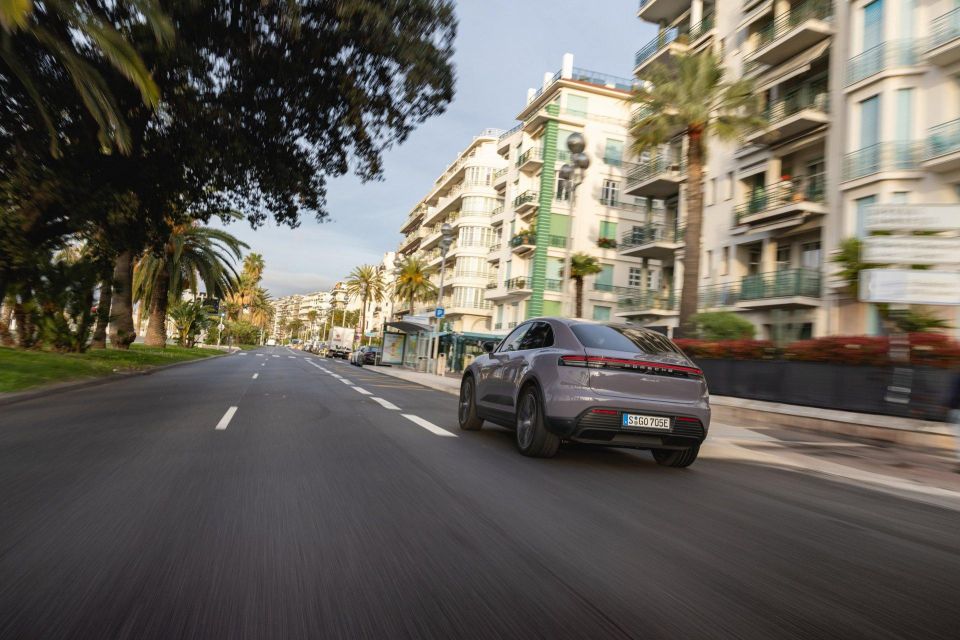
Despite its size the Macan can confidently be thrown into corners at pace. The Turbo uses an electronic differential lock on the rear axle with torque vectoring, which helps it limit wheel slip out of corners when you get on the throttle.
The body stays nice and flat when it’s punted through corners and there’s a satisfying degree of feedback through the seat of your pants as you get on.
One thing I wasn’t a fan of – and this applies to most cars with this tech – was the rear-wheel steering setup in Sport +. It’s super engaged and attentive, which means small steering inputs begin to rotate the rear of the vehicle as the rear-wheel steering triggers.
To me it’s a bit much, but I’ll reserve proper judgement for when we get the vehicle at the proving ground later this year.
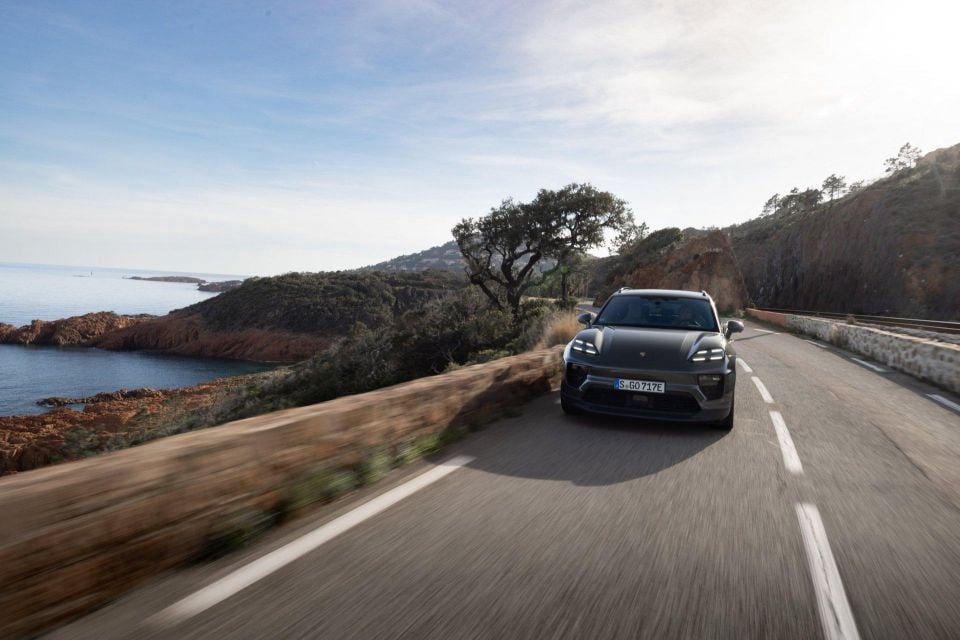
Where expert car reviews meet expert car buying – CarExpert gives you trusted advice, personalised service and real savings on your next new car.
Braking performance felt great at speed, to the point where it was hard to tell when it was moving through the blend zone of regen to friction brakes.
After a few hours of driving up and down some mountains (admittedly the earlier parts were a crawl in traffic), we achieved overall efficiency of around 22kWh/100km for the Turbo and around 21kWh/100km for the Macan 4.
It’s also worth noting on our first day of driving our first Macan Turbo had an adaptive suspension failure. It appeared to be a software or electrical issue that caused the suspension to the issue.
We had to return the vehicle to base for it to be inspected. It was ready to go again the following day and was safe to drive in that state, but we wanted to err on the side of caution.
The range will initially launch with the Macan 4 and Macan Turbo – more models are expected to be announced in the coming months.
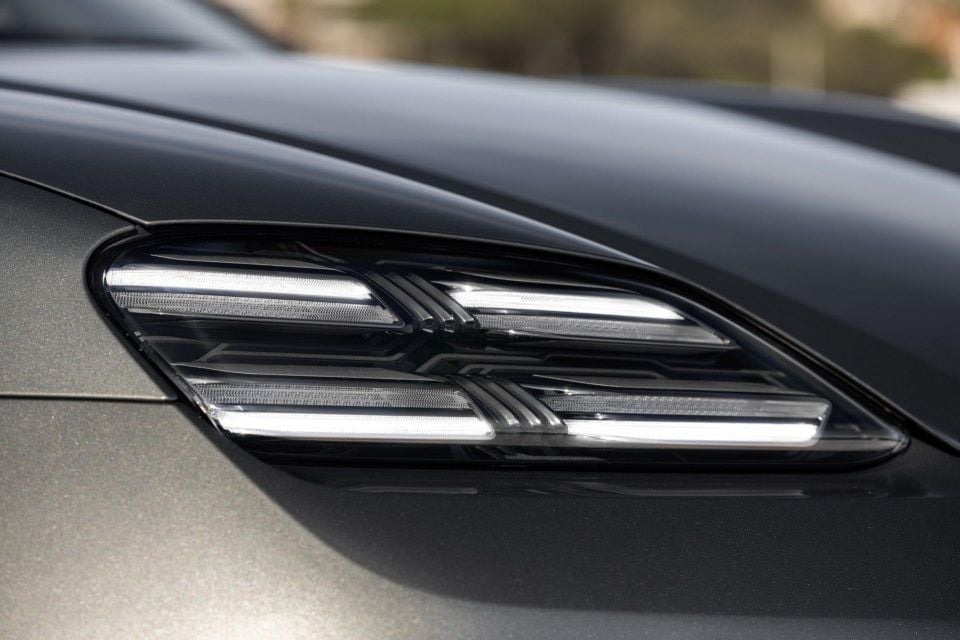
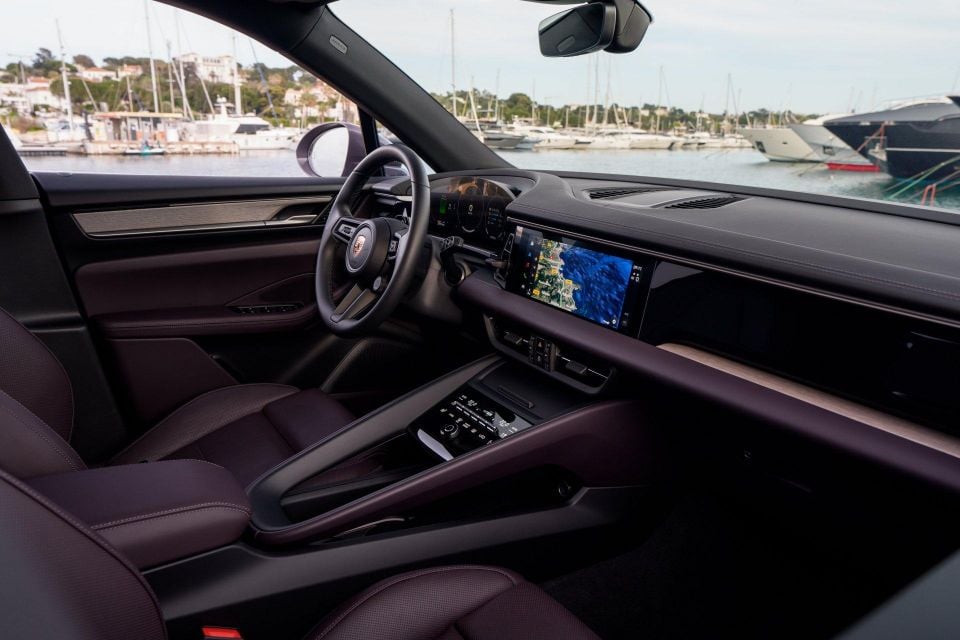
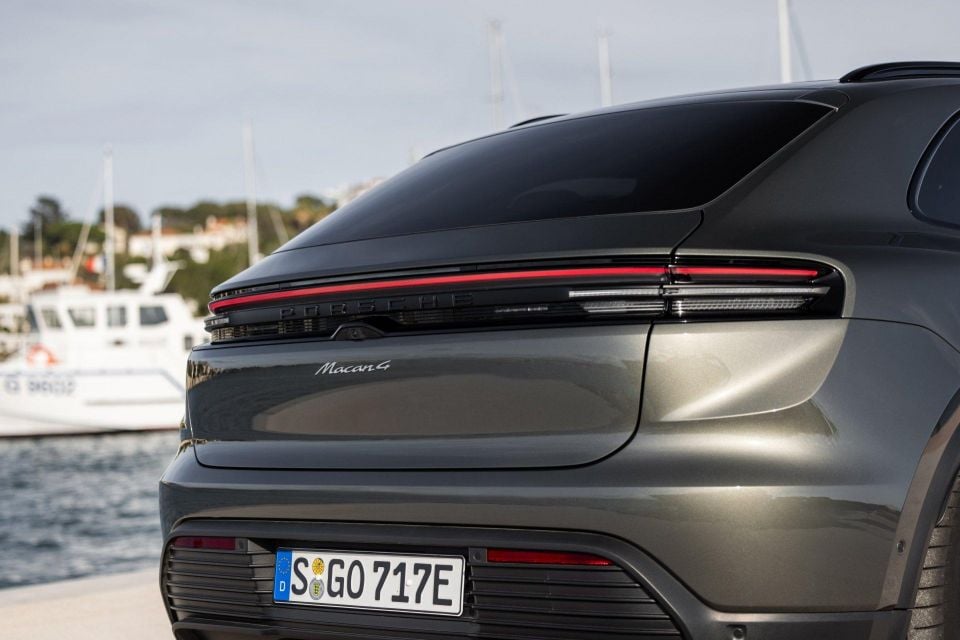
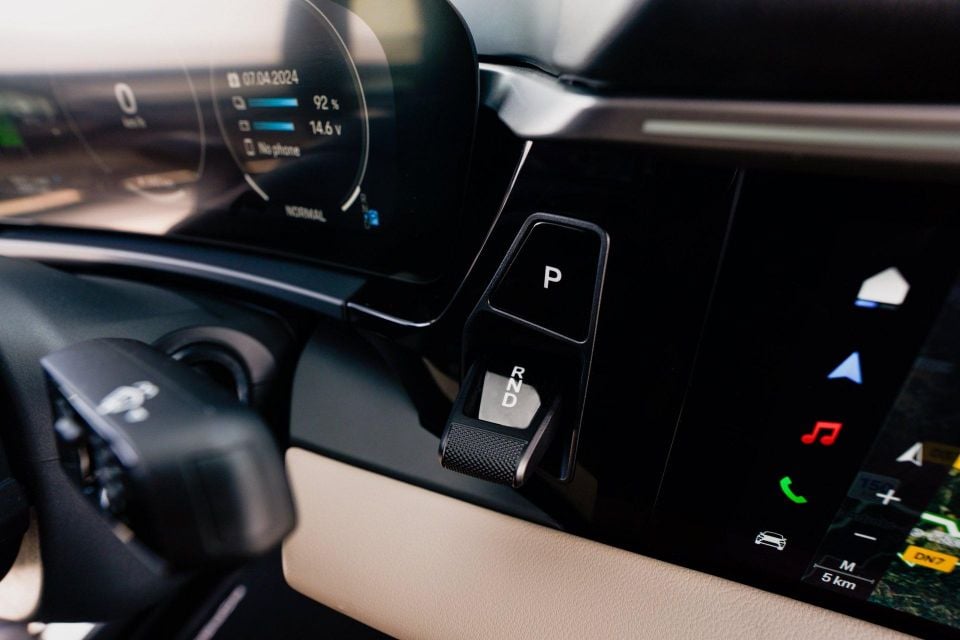
Standard kit for the Macan 4 includes:
Macan Turbo adds:
Porsche has done a remarkably good job with the all-new Macan Electric.
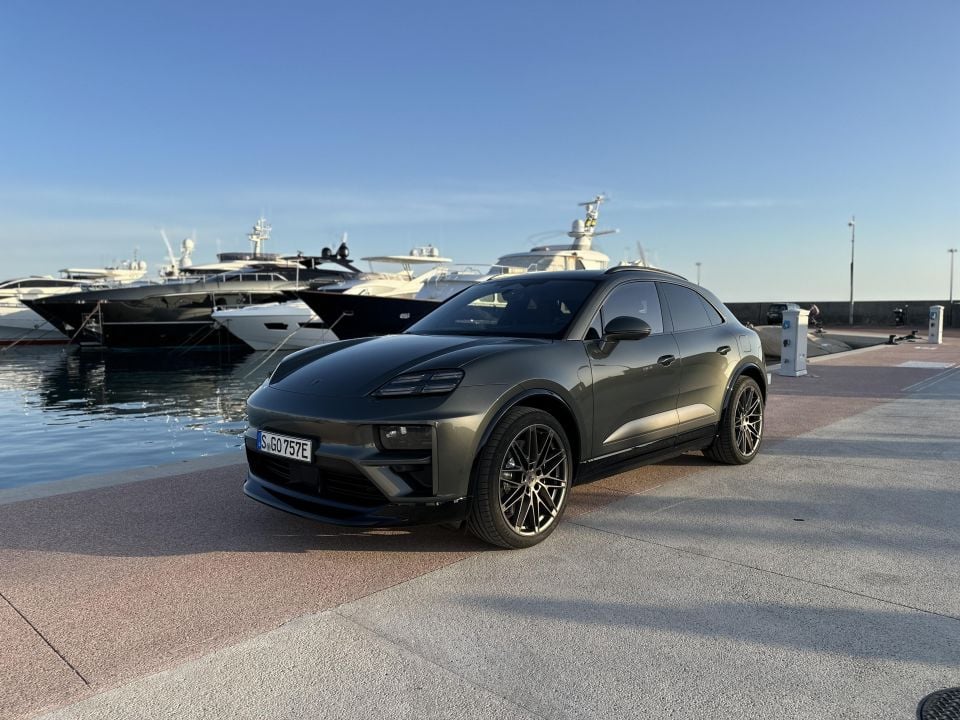
It feels every part a Porsche but has all the latest tech that makes it an excellent electric vehicle.
On paper, it has the best electrical architecture, enough battery capacity for decent driving range and explosive performance if that’s what you’re after.
The price does concern me – it’s a huge step up in price over the outgoing model, so much so it’s likely to price a number of Macan buyers out of the new model.
Time will tell whether the right decision was to switch Macan from internal combustion to fully electric, but if it doesn’t pan out for whatever reason it won’t have been a failure of the vehicle. It’s excellent and I’m excited to have a proper drive back home in Australia.

Click the images for the full gallery
MORE: Buy a Porsche Macan MORE: Everything Porsche Macan
Where expert car reviews meet expert car buying – CarExpert gives you trusted advice, personalised service and real savings on your next new car.
Paul Maric is a CarExpert co-founder and YouTube host, combining engineering expertise with two decades in automotive journalism.


James Wong
2 Days Ago
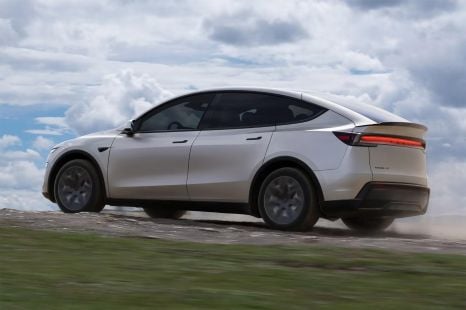

Derek Fung
2 Days Ago
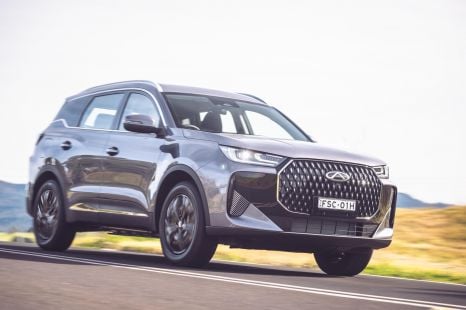

CarExpert.com.au
4 Days Ago
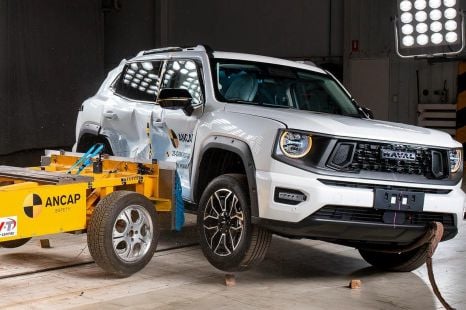

James Wong
4 Days Ago
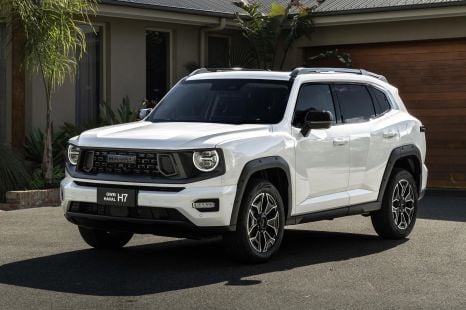

William Stopford
4 Days Ago
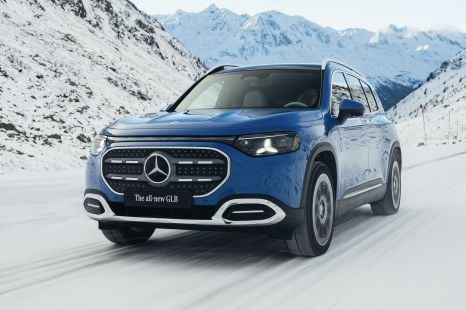

Gautam Sharma
15 Days Ago